HTC One max Review - It's Huge
by Brian Klug on October 28, 2013 10:00 AM EST- Posted in
- Smartphones
- HTC
- Mobile
- One
- Snapdragon 600
- Android 4.3
- One max
The One max joins a small but growing list of phones that include a fingerprint scanner for unlocking the device. I’ll leave the discussion about whether fingerprints are fundamentally usernames or passwords for another day, but fingerprint scanners seem to be in vogue right now for mobile phones. You could make the case that the perceived increase in security that comes with fingerprint scanners is both an enterprise or consumer play, again I’ll leave that philosophical discussion for another day. I remember the Motorola Atrix and its fingerprint scanner being a big deal a while ago, since then we’ve had the iPhone 5s dramatically reintroduce the fingerprint scanner and now the One max follow suit.
The One max fingerprint sensor is a swipe type, meaning there’s some kind of strip sensor inside that you swipe your finger across. Sliding your finger over this strip allows the module to scan a 2D region and extract features that are then used to identify a fingerprint. The One max hides this scanner inside a black square that’s slightly recessed on the back of the device, just beneath the camera. I’m reminded somewhat of the LG G2 and its rear-mounted power and volume buttons which also sit just beneath the rear-facing camera. Perhaps that’s a missed opportunity for LG, which could have also gone with a swipe type sensor in its power button. On the One max anyhow there’s no button, just the sensor. Although the fingerprint sensor is recessed slightly, it’s somewhat difficult to locate with just one’s index finger, something that results in inadvertent smudging of the rear-facing camera cover glass, something that didn’t happen as much with the G2 because there’s a larger lip and easily locatable bump.
The placement of the fingerprint sensor makes sense given that of the power button. As stated earlier for right handed users this means your index finger sits naturally near the sensor if your thumb is on the power button. Since the fingerprint button still requires activation to unlock the One max, you still need to press power to turn it on before you can swipe your finger and finally unlock it. I find myself wishing the fingerprint sensor was itself a button, something like the iPhone 5s, so unlocking could be as simple as pressing and swiping with the same finger. On the iPhone 5s the best activation pattern is pressing the home button and leaving the finger in contact with the button.
Setup requires you to set a passcode, after which a few training swipes trains the sensor for the finger you’ve chosen. Although the animation that plays shows the finger aligned along the long axis of the phone, for greater accuracy I trained the One max with my finger at the angle it would naturally be given my thumb on the power button. The only requirement given the swipe sensor is that the slide motion is straight down and not skewed.
The One max fingerprint sensor allows for up to 3 fingers to be paired, each able to either unlock or have the option of both unlocking and launching an application. I like the idea of fingerprints as shortcuts, something the iPhone 5s implementation lacks, but three fingers seems like a curiously low number given the ten digits humans have to work with. On the other hand, the placement of the button really limits you to middle and index fingers being viable options. In terms of functionality, although Apple doesn’t yet use fingerprints as shortcuts, Apple does use the fingerprint scanner to authenticate iTunes, iBooks, and App Store purchases, something HTC can’t quite do with the One max for Google Play purchases, at least until Google makes an API for it.
I initially trained the fingerprint sensor with my index finger being swiped straight down, and had some issues with unlocks requiring multiple swipes. Doing finger enrollment and training at an angle closer to how I actually swipe it naturally (at an angle) made the accuracy better, but the reality is that unlocking the One max still requires multiple tries more often than not. There isn’t much processing latency after a scan, but I had hoped the One max sensor would be tap and hold rather than swipe given its shape. I’m not clear what suppliers are involved for the sensor, but I’m told the One max also securely stores just the extracted features and not the fingerprint images (which is a no brainer). I haven’t delved much into the infrastructure used to secure the fingerprint features yet either. I’m also not sure whether the One max learns additional parts of the finger which wasn’t part of initial training the same way Apple’s does.
Although I don’t think anyone has totally nailed the fingerprint sensor yet on a device, the One max implementation definitely is further from perfection than Apple’s. Although it does work reasonably well, it still isn’t the transparent kind of convenience that I feel will compel users who ordinarily wouldn’t have to used a passcode to go and use the fingerprint scanner. I’ve continued using the fingerprint scanner on the One max, however.


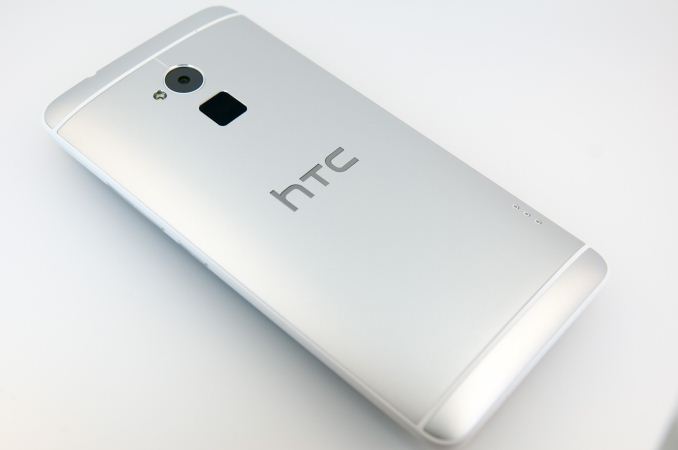
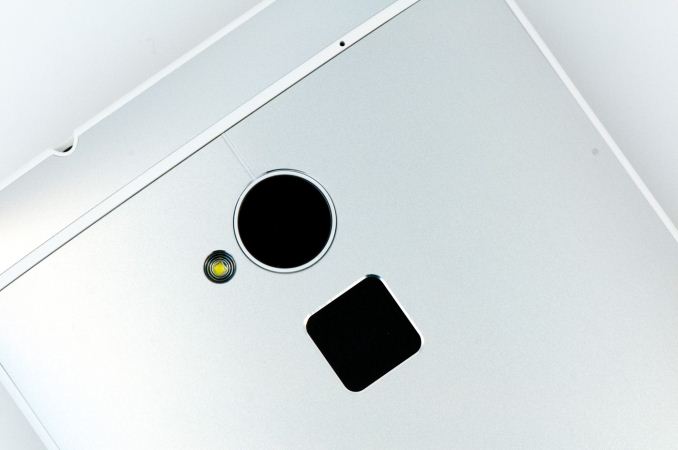
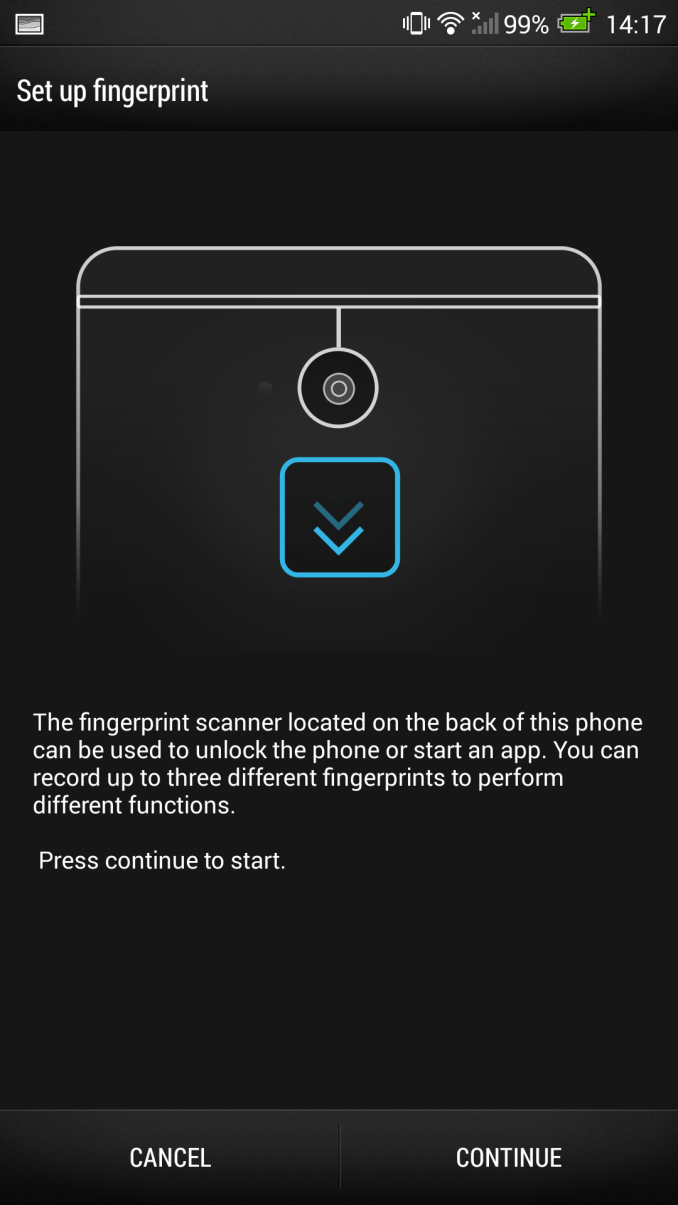
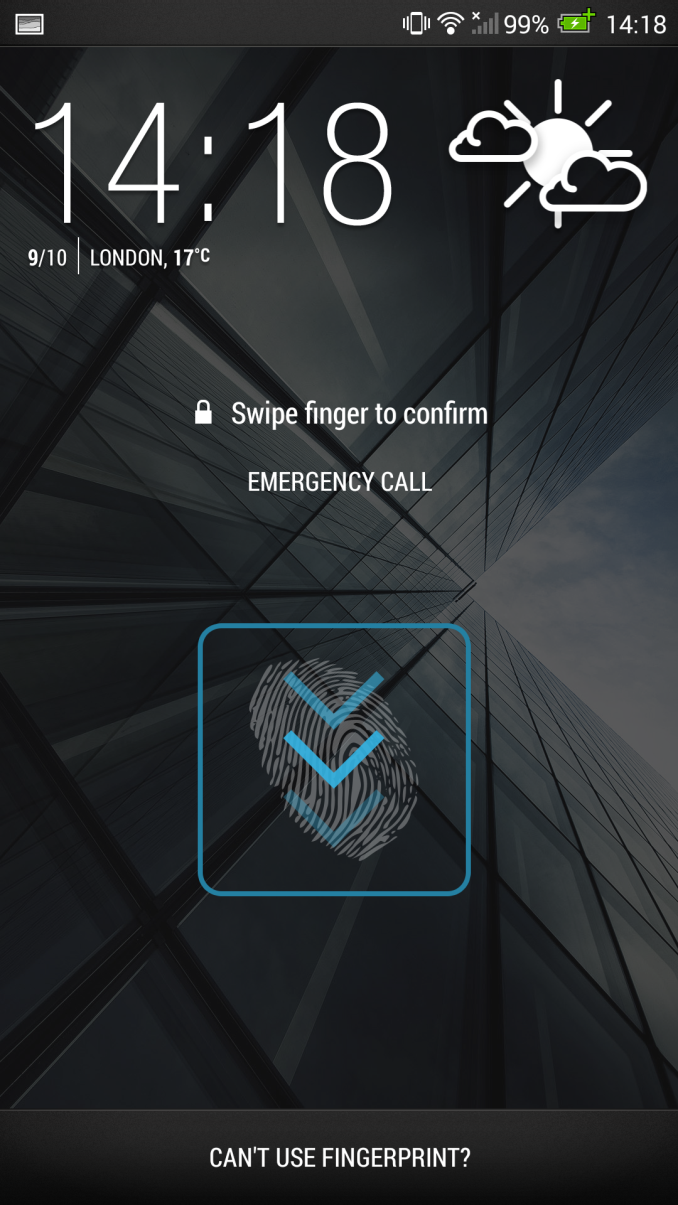

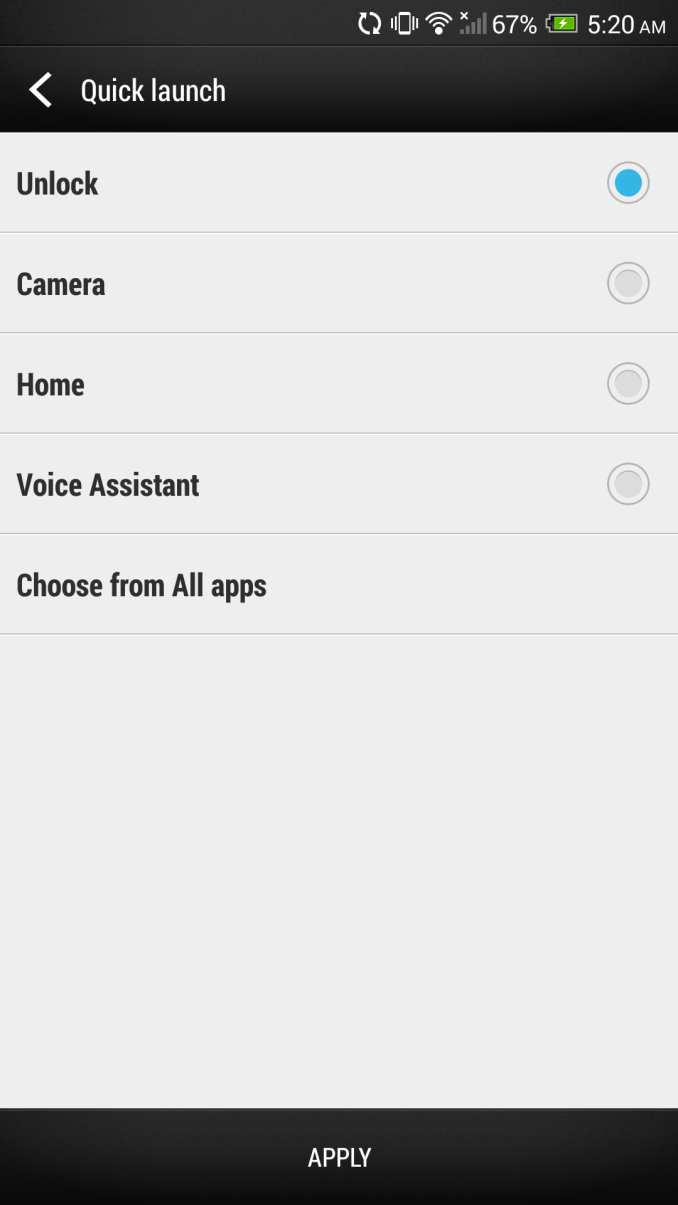








197 Comments
View All Comments
superflex - Tuesday, October 29, 2013 - link
If a 64 GB uSD card makes you happy, you might have problems.PC Perv - Tuesday, October 29, 2013 - link
Biggest logical fallacy is to claim that there is no need for affordable storage options in smartphones when the OEMs are charging $100, $200, $300 extra per those extra storages, and apparently the reviewer doesn't see the irony of it. If no one needs more than 16 GB, how do the OEMs get away with such ridiculous markups?The reviewer is happy as clam as long as she gets a new phone every other week.
chizow - Tuesday, October 29, 2013 - link
Yes, they're going away, slowly but surely, except they're not and in this case a device-maker that didn't include SD slots before added it to their latest flagship phone? How can you claim logical fallacy and not realize the inaccuracy of what you just wrote? Do you think next year's HTC One update will include an SD slot or no?As for the rest, it doesn't matter what the majority of disinterested users want, like any industry, the demand of the top-end drives demand and innovation for the rest. Just as most people may not care for a microSD slot, removable battery, or unibody aluminum chassis, they will ALMOST CERTAINLY take the advice over which phone to pick based upon the input from someone who DOES care about those features, or has the phone and decides on it based on word of mouth or first hand exposure.
bairlangga - Monday, October 28, 2013 - link
Dear Anand(Tech),No love for Xperias? Saw every brand are accounted for here, except Sony ;-)
superflex - Tuesday, October 29, 2013 - link
Because Sony want proved a demo sample. Blame your shitty manufacturer for that one, SparkyMercuryStar - Monday, October 28, 2013 - link
You have the HTC One Mini listed as a quad core Krait 200. Isn't it actually a dual core, and isn't it actually Krait 300, being that it's MSM8930aa?MercuryStar - Monday, October 28, 2013 - link
You're not the first person to claim the One Mini has a plastic speaker grille, but to me seeing it in person it is clearly metal, albeit with one of those clear plastic coatings like aluminum food tins usually have on the inside to protect the food. What's the deal - what makes you claim it's plastic? I agree it doesn't look great like on the One, but it quite clearly is metal albeit with a lower grade finish.AbbyYen - Monday, October 28, 2013 - link
For god shake, put snappy dragoony 800 in it already. And please, anything lower then 8MP is budget phone category. ultra pixel is useless. try capture a document and Ye shall know the difference. speaker at the front are welcome thou.fixxxer0 - Monday, October 28, 2013 - link
am I the only one laughed out loud at the speakerphone volume graph.... (beats off)Laststop311 - Monday, October 28, 2013 - link
Would of made much more sense to go with the SD 800. SD 400 on mini SD 600 on One and SD 800 on max. The SD 800 actually has better battery life due to LTE integration and it's faster. I can't bring myself to buy an outdated SoC when phones are already outdated so fast. Buying anything less than a SD 800 is a foolish move.I was really pumped about the max. But the SD 600 ruined it for me. I've been let down constantly. Was pumped for the lumia 1520 but of course t-mobile isn't getting it. I was pumped for the note 3 but it was barely an upgrade from the note 2. There is nothing good enough to make me want to add 23 dollars a month to my bill to subsidize a phone when my G note 2 is fully paid off and I get pure unlimited everything for 69.99 with LTE activated in my area. Looks like my note 2 will be my trusty side kick another year. Hope the note 4 brings something great to the table.